Sunday, August 16, 2009
The Naturalist
Hi everyone! We are the Naturalist. As part of our Service Learning Project, my team and I from St Hilda's Secondary School decided to come up with a blog on the nature of Pulau Ubin. The purpose of this blog is to get in touch with youths to know more about nature through technology and to also allow them to know more about the Flora and Fauna of Pulau Ubin. The blog is a collaboration project with National Parks Board (Pulau Ubin). The blog also acts as a guide with information on the plants that you will chance upon at Pulau Ubin and also to let you get a better knowledge of the plants before you head down to Pulau Ubin. So please enjoy it. :)
Munias
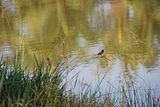
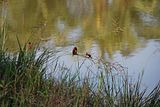
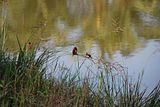
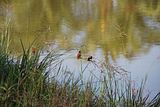
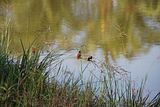
The pictures shown here are Munias. The Munias feed mainly on seeds, usually in relatively open habitats, preferring to feed on the ground or on reeds and grasses.
The Munias shown here are resting on plants along the pond. Do not cycle at fast speed when you are at Pulau Ubin or you will missed out tiny creatures like the Munias. The Munias shown here seems to be a couple.
Wild Boar
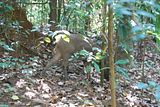
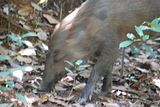
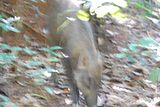
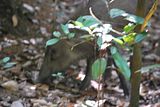
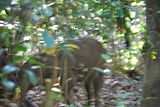
The Wild Boar is widespread in Pulau Ubin but it is difficult to encounter them as they usually hide in the forests. The Wild Boar likes to eat coconut. The Wild Boar is a species of a pig in the biological family Suidae and the wild ancestor of the domestic pig. If you see a Wild Boar, do not go to near towards it for safety reasons. The Wild Boar moves around often so getting a still shot of it is rather rare. Chances of seeing the Wild Boar is hard but if you see one, try to take a picture of it. The picture above is a Wild Boar searching for food in the forest.
Water Monitor Lizard
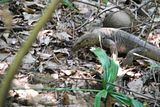


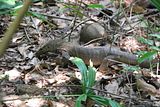
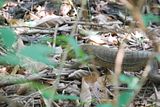
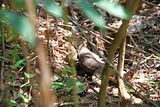
The Water Monitor Lizard is a large species of monitor lizard capable of growing over 3 meters in length, with the average size of most adults at 2.5 meters long. The Water Monitor Lizard found here was seen inside the forest searching for food. It moves fast and thus taking pictures of it is not easy. The Water Monitor Lizard is known to eat fish, frogs, rodents, birds, crabs, and snakes. As the Water Monitor Lizard bites do not kill its prey, rather the bacteria within the ridges of its mouth infect the prey and it will eventually die. As a result, the Water Monitor Lizard prefers to eat corpse rather then to put up a struggle. Hear anything moving about the grasses and it might be the Water Monitor Lizard.
Juvenile Oriental Pied Hornbill
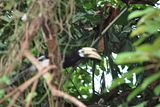
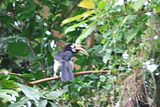
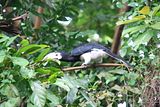
These pictures shown here are the Juvenile Oriental Pied Hornbill (last October's batch). It is a species of hornbill in the Bucerotidae family. The natural of its habitat is subtropical or tropical moist lowland forests. The Juvenile Oriental Pied Hornbill in Pulau Ubin is the only wild population of Oriental Pied Hornbill in Singapore. To spot the Juvenile Oriental Pied Hornbill is simple; you just need a pair of sharp ears. Its raucous cackling will help you know its presence. These birds are rather shy, so if you want to take a good photo, keep the noise level as low as possible.
Saturday, August 15, 2009
Frangipani / Plumeria

Frangipani also known as Plumeria. Frangipani posseses milky sap which is poisonous and separate species have different shaped leaves and their form and growth habits are distinct. Plumeria flowers are most fragrant at night in order to lure sphinx moths to pollinate them. The flowers have no nectar, and simply dupe their pollinators. The moths inadvertently pollinate them by transferring pollen from flower to flower in their fruitless search for nectar. They are now common naturalised plants in southern and southeastern Asia, and in local folk beliefs provide shelter to ghosts and demons. The scent of the Plumeria has been associated with a vampire in Malay folklore, the pontianak. They are associated with temples in both Hindu and Buddhist cultures, though Hindus (except on Bali) do not use the flowers in their temple offerings. In Bangladeshi culture most white flowers, and particularly plumeria) are associated with funerals and death.
Costus speciosus

Costus speciosus or crape ginger is possibly the best known cultivated species of the genus Costus. This plant is native to Southeast Asia. The plant has many historical uses in Ayurveda, where the rhizome has been used to treat fever, rash, asthma, bronchitis, and intestinal worms. C. speciosus has a large number of common names in many languages, including isebsab (Palauan), keukand (Hindi), pakarmula (Gujarati), pushkarmula (Marathi and Sanskrit), and kostam (Tamil). It is cultivated in India for its medicinal uses and elsewhere as an ornamental.
Banana Fruit

Bananas are yellow curvy fruits which are native to the tropical region of Southeast Asia. The banana fruit grow in clusters, with up to 20 fruit to a cluster, and 3–20 clusters to a bunch (one banana plant) . The total of the hanging clusters is known as a bunch, or commercially as a "banana stem", and can weigh from 30–50 kg. Each individual fruit has a protective outer layer (a peel or skin) with a fleshy edible inner portion. Both skin and inner part can be eaten raw or cooked. Western cultures generally eat the inside raw and throw away the skin while some Asian cultures generally eat both the skin and inside cooked.
Lantana

Lantana's aromatic flower clusters (called umbels) are a mix of red, orange, yellow, or blue and white florets. Other colors exist as new varieties are being selected. The flowers typically change color as they mature, resulting in inflorescences that are two- or three-colored. A common name for one species of the Lantana is "Ham 'n Eggs" due to the adjacent pink and yellow inflorescences. The spread of lantana is aided by the characteristic of their leaves, which are somewhat poisonous to most animals, while their fruit is a delicacy for many birds which distribute the seeds. Lantana species are widely cultivated for their flowers in tropical and subtropical environments and (as an annual plant) in temperate climates.
Coconut

Coconut fruit is light, buoyant and highly water resistant and can disperse significant distances via marine currents. Coconuts received the name from Portuguese explorers, the sailors of Vasco da Gama in India, who first brought them to Europe. The brown and hairy surface of coconuts reminded them of a ghost called coco (known in Castilian as El coco).When coconuts arrived in England, they retained the coco name and the suffix -nut was added. The white, fleshy part of the seed, the coconut meat, is edible and used fresh or dried in cooking. The cavity is filled with coconut water which contains sugar, fiber, proteins, antioxidants, vitamins and minerals and is a highly nutritious food source. It is used as a refreshing drink throughout the humid tropics and is also used in isotonic sports drinks.
Ant's nest

Consist of a series of underground chambers, connected to each other and the surface of the earth by small tunnels. There are rooms for nurseries, food storage, and mating. The nest is built and maintained by legions of worker ants, which carry tiny bits of dirt in their mandibles and deposit them near the exit of the colony, forming an ant-hill. An ant-hill, is a pile of earth, sand, pine needles, or clay or a composite of these and other materials that build up at the entrances of the subterranean dwellings of ant colonies as they are excavated. A colony is built and maintained by legions of worker ants, which carry tiny bits of dirt and/or vegetation in their mandibles and deposit them near the exit of the colony. They normally deposit the dirt or vegetation at the top of the hill to prevent it from sliding back into the colony, but in some species they actively sculpt the materials into specific shapes, and may create nest chambers within the mound.
Noni Tree
 This is the Noni Tree flower plant.
This is the Noni Tree flower plant.
Noni grows in shady forests as well as on open rocky or sandy shores. It reaches maturity in about 18 months and then yields between 4–8 kilograms of fruit every month throughout the year. It is tolerant of saline soils, drought conditions, and secondary soils. It is therefore found in a wide variety of habitats: Volcanic terrains, lava-strewn coast and clearings or limestone outcrops. It can grow up to 9 meters tall, and has large, simple, dark green, shiny and deeply veined leaves. The plant flowers and fruits all year round and produces a small white flower. The fruit is a multiple fruit that has a pungent odor when ripening, and is hence also known as cheese fruit or even vomit fruit. It is oval and reaches 4–7 centimeters in size. At first green, the fruit turns yellow then almost white as it ripens. It contains many seeds. It is sometimes called starvation fruit. Despite its strong smell and bitter taste, the fruit is nevertheless eaten as a famine food and, in some Pacific islands, even a staple food, either raw or cook the fruit raw with salt or cook it with curry. The seeds are edible when roasted.
The Noni is especially attractive to weaver ants, which make nests out of the leaves of the tree. These ants protect the plant from some plant-parasitic insects. The smell of the fruit also attracts fruits bats, which aid in dispersing the seeds. In Hawaii, ripe fruits are applied to draw out pus from an infected boil. The green fruit, leaves and the root/rhizome have traditionally been used to treat menstrual cramps and irregularities, among other symptoms, while the root has also been used to treat urinary difficulties.
The bark of the great morinda produces a brownish-purplish dye for batik making. In Hawaii yellowish dye is extracted from its root in order to dye cloth.
There have been recent applications for the use of oil from Noni seeds. Noni seed oil is abundant in linoleic acid that may have useful properties when applied topically on skin, e.g., anti-inflammation, acne reduction, moisture retention.
The Noni is especially attractive to weaver ants, which make nests out of the leaves of the tree. These ants protect the plant from some plant-parasitic insects. The smell of the fruit also attracts fruits bats, which aid in dispersing the seeds. In Hawaii, ripe fruits are applied to draw out pus from an infected boil. The green fruit, leaves and the root/rhizome have traditionally been used to treat menstrual cramps and irregularities, among other symptoms, while the root has also been used to treat urinary difficulties.
The bark of the great morinda produces a brownish-purplish dye for batik making. In Hawaii yellowish dye is extracted from its root in order to dye cloth.
There have been recent applications for the use of oil from Noni seeds. Noni seed oil is abundant in linoleic acid that may have useful properties when applied topically on skin, e.g., anti-inflammation, acne reduction, moisture retention.
Golden Orb Spider

The name of the golden orb spider refers to the colour of the spider silk, not the color of the spider itself. Yellow threads of their web shine like gold in sunlight. Experimental evidence suggests that the silk's color may serve a dual purpose: sunlit webs ensnare bees that are attracted to the bright yellow strands, whereas in shady spots the yellow blends in with background foliage to act as a camouflage. The spider is able to adjust pigment intensity relative to background light levels and color; the range of spectral reflectance is specifically adapted to insect vision. The webs of most Nephila spiders are complex, with a fine-meshed orb suspended in a maze of non-sticky barrier webs. As with many weavers of sticky spirals, the orb is renewed regularly if not daily, apparently because the stickiness of the orb declines with age. When weather is good (and no rain has damaged the orb web), subadult and adult Nephila often rebuild only a portion of the web. The spider will remove and consume the portion to be replaced, build new radial elements, then spin the new spirals. This partial orb renewal is distinct from other orb-weaving spiders that usually replace the entire orb web.
Fishtail Palm / Caryota

Caryota is a genus of Palm trees. They are often known as fishtail palms because of the shape of their leaves. There are about 13 species native to Asia and the South Pacific. One of the more widely known species is Caryota urens, which yields sap used to make an unrefined sugar called jaggery, and also to make palm wine. Caryota mitis is an invasive introduced species in the US state of Florida. They are also one of the few Arecaceae with bipinnate foliage. Many grow in mountainous areas and are adapted to warm mediterranean climates as well as subtropical and tropical climates.
Bamboo

The bamboos are a group of woody perennial evergreen plants in the true grass family of Poaceae. Bamboos are the fastest growing woody plants in the world. Their growth rate is up to 60 centimeters per day. The shoots of bamboo are edible. They are used in numerous Asian dishes and broth. In addition, bamboo is frequently used for cooking utensils within many cultures. In modern times, some see bamboo tools as an eco-friendly alternative to other manufactured utensils. Bamboo is also used in Chinese medicine for treating infections and healing. Bamboos are also used in construction, textiles and as musical instruments such as the dizi, xiao, shakuhachi, pelendag, jinghu and the angklung. Bamboos are also in myths and legends in several Asian cultures. Furthermore, Bamboo was in widespread use in early China as a medium for written documents. The earliest surviving examples of such documents are written in ink on string-bound bundles of bamboo strips.
Asystasia gangetica
The Clown Flower (Torenia fournieri)

The clown flower (Torenia fournieri) is a Compact and bushy 8 inch plants produce beautiful bright flowers that look like miniature gloxinias. It is excellent in borders, pots, and window boxes. Likes moisture and prefers sun in cool climates, part shade where summers are hot. Packet is 30 pelleted seeds. It grows annually and has a height of 15-30 cm it spaces between 15-22 cm, spreading, bushy annuals and perennials. Needs partial shade in the hottest of climates but can take full sun in cooler environments. The most cultivated species is Torenia fournieri. Grows well either at a summer bedding or at the anterior of an annual or mixed border. Also works well as a summer-flowering houseplant. It can also be raise in a cool greenhouse and bushy annual that is especially valuable because it blooms abundantly in shady conditions. The species has lilac-blue flowers with deep purple lower lips and a yellow-blotched throat. Cultivars are available in many colors including pink, rose, white, and burgundy. It's a great choice for edging and containers. Container plants may be brought indoors for winter bloom.
Acalypha spp

The Acalypha spp is a native annual plant is ½–2' tall, and usually unbranched. The central stem has lines of fine white hairs, or is glabrous. The alternate leaves are up to 3½" long and 1" across, with long narrow petioles that are slightly hairy. They are lanceolate or ovate, with bluntly serrated margins and conspicuous pinnate venation. There is a tendency for the leaves to congregate together near the top of the central stem, or any side stems that may be present where the petiole of each leaf meets the stem; there is a conspicuous bract that wraps around the inflorescence consisting of a green cyathium. This bract is slightly ciliate along the edges, and has 5-9 lobes. The cyathium contains tiny staminate and pistillate flowers without sepals and petals. The staminate flower is covered with yellow pollen, while the pistillate flower produces a 3-lobed spheroid fruit that is typical of the spurges. Each fruit contains three seeds. The blooming period occurs from about mid-summer until frost during the fall, and lasts one or more months. There is no floral scent. The root system consists of a central taproot.
Heliconia


Heliconias (Heliconia spp.) are native to Central and South America and some islands of the South Pacific. Because they bear large, colorful and conspicuous flowering branches in various sizes, shapes and designs, they are favorite garden plants throughout the tropics and subtropics. They grow fast and within months they flower. Heliconias are excellent as border plants, for landscaping or even when grown in large containers. The flowering branch or inflorescence is either erect or pendent and is the most conspicuous feature of the plant. Borne along the inflorescence are many colourful bracts – red, pink, orange, yellow or even green. Found within these bracts are the flowers. These flowers are often seen in gardens and have a red yellow petal. If there is any more common flower, this will beat it all as it can grow very fast. Sunbirds have exploited this feeding niche and regularly visit Heliconia flowers. In the first photo, it is the Parrot Heliconia or also known as Heliconia psittacorum. In the second photo is the Heliconia latispatha inflorescence.
Wedelia

Wedelia is a very attractive plant because of its nearly constant and prolific blooming. It is fairly salt resistant and grows well at the seashore. Wedelia is a soil creeper and forms a thick carpet. It is especially good for soil retention and erosion control. The plant can also be used in hanging baskets. It may be best used as a container plant where it will cascade over the side forming a weeping mound of yellow flowers. The plant has fleshy leaves. The leaves are 5 inches long and 3 lobed at the apex. It has bright yellow flowers that almost flowers throughout the year. It blossoms profusely. Ground cover, hanging basket, container plant is its common uses is native to the northern part of South America and the West Indies. It is a creeping evergreen perennial that roots at the leaf nodes and spreads widely. The leaves are ovate and usually 3 lobed. The flower is a yellow daisy-like flower that is approximately 1 inch across. Plant creeps and roots at nodes, making a dense ground cover, as well as a great hanging basket. It grows well under trees but it will not tolerate wet soils. In Suriname's traditional medicine, Wedelia is used to treat hepatitis, infections and to clear the placenta after birth.
Singapore Rhododendron

The Singapore Rhododendron or the Melastoma malabathricum (melastoma is Greek for "black mouth") or Sendudok in Malay grows to 1 meter tall it has reddish and small rough scales. They have narrow leaves with 3 veins they have 5 petals dark purple to pinkish; on rare occasions, white. They have Oval Fruits with purple pulp which contains many tiny seeds. It is found in Madagascar, India to Australia. Very common in Southeast Asia. The beautiful flowers last only one day, opening after sunrise, closing the same day, with the petals falling off on the a few days later. The fruit of the Singapore Rhododendron is oval with purple pulp and contains many tiny seeds. The leaves have medicinal uses such as to treat diarrhoea and dysentery (Malaysia, Indonesia); wash for ulcers, to prevent scarring from smallpox; and to treat piles. As a result, this flower is a rarity as it closes very quickly.
Water Lily


The common Water Lily, also known as Nymphaeaceae, is typically found in ponds and lakes throughout the world. It comes in a variety of colours, ranging from white to blue to pink. In this case, it is purple. The yellowish centre of the flower contains the Water Lily’s reproductive parts like the ovule, pollen tube and anthers. Interestingly, the tips of each of them are purple while the rest of the parts are yellow. Unfortunately, the Water Lily is another plant that is labelled as an invasive species as it infests slow moving bodies of water (like this pond). However its image as a trademark icon has led to its use for ornamental purposes.
Allamanda

The Allamanda, also known as Yellow Bell, Golden Trumpet or Buttercup Flower, well-known for its large, bright yellow flowers is a woody, evergreen shrub. In this beautiful close-up photo it can be seen with its trademark five petals. The plant grows rapidly, reaching 1-3m annually (it grows faster than you!), and cutting attempts to control its growth only leads to coppicing - discarded Allamanda plants are quick to take root. Unfortunately it has been labelled an invasive species in some parts of Australia. In other words it is considered a weed. However the evergreen nature of the Allamanda has made it commonly used for ornamental purposes.
Crotalaria spectabilis

This picture shown here is a Crotalaria spectabilis. It is fully grown and the colour is bright yellow. From far, it is attractive because of its bright colour. Not only that, the plant can be identified out easily because of its characteristics. Keep your eyes open when you are at Pulau Ubin to see these plants.
Dark Glassy Tiger Butterfly

The Dark Glassy Tiger butterfly is a species of butterfly commonly found throughout Singapore. Here it can be seen resting on a Crotalaria retusa plant. As can be seen, the Dark Glassy butterfly has blue and black stripes on its wings. Male Dark Glassy butterflies have special scent scales on the hindwing probably used for mating. Males also extrude a pair of yellow hair pencils when alarmed. Tiger butterflies like the Dark Glassy are known to be particularly attracted to the Crotalaria retusa. Also seen in the picture are Crotalaria retusa seed pods. The seed pod the Dark Glassy Tiger butterfly is resting on seems to be at the final stages of changing from a yellow flower to a black seed pod.
Rattlebox plant / Crotalaria retusa

The Crotalaria retusa, also known as a Rattlebox plant, is a herbaceous plant or woody shrub. It can be found commonly world-wide and is even considered a weed in the United States. In this picture a Dark Glassy Tiger Butterfly can be seen drinking the nectar from a premature Crotalaria retusa flower. Tiger butterflies are known to be particularly attracted to Rattlebox plants. To the left of the plant, another Crotalaria retusa can be seen just shy of being fully-bloomed. A seemingly dead Rattlebox plant can be seen at the bottom-right section of the picture. It is actually a seed pod which is used to disperse seeds in order for the plant to reproduce.
Subscribe to:
Comments (Atom)
